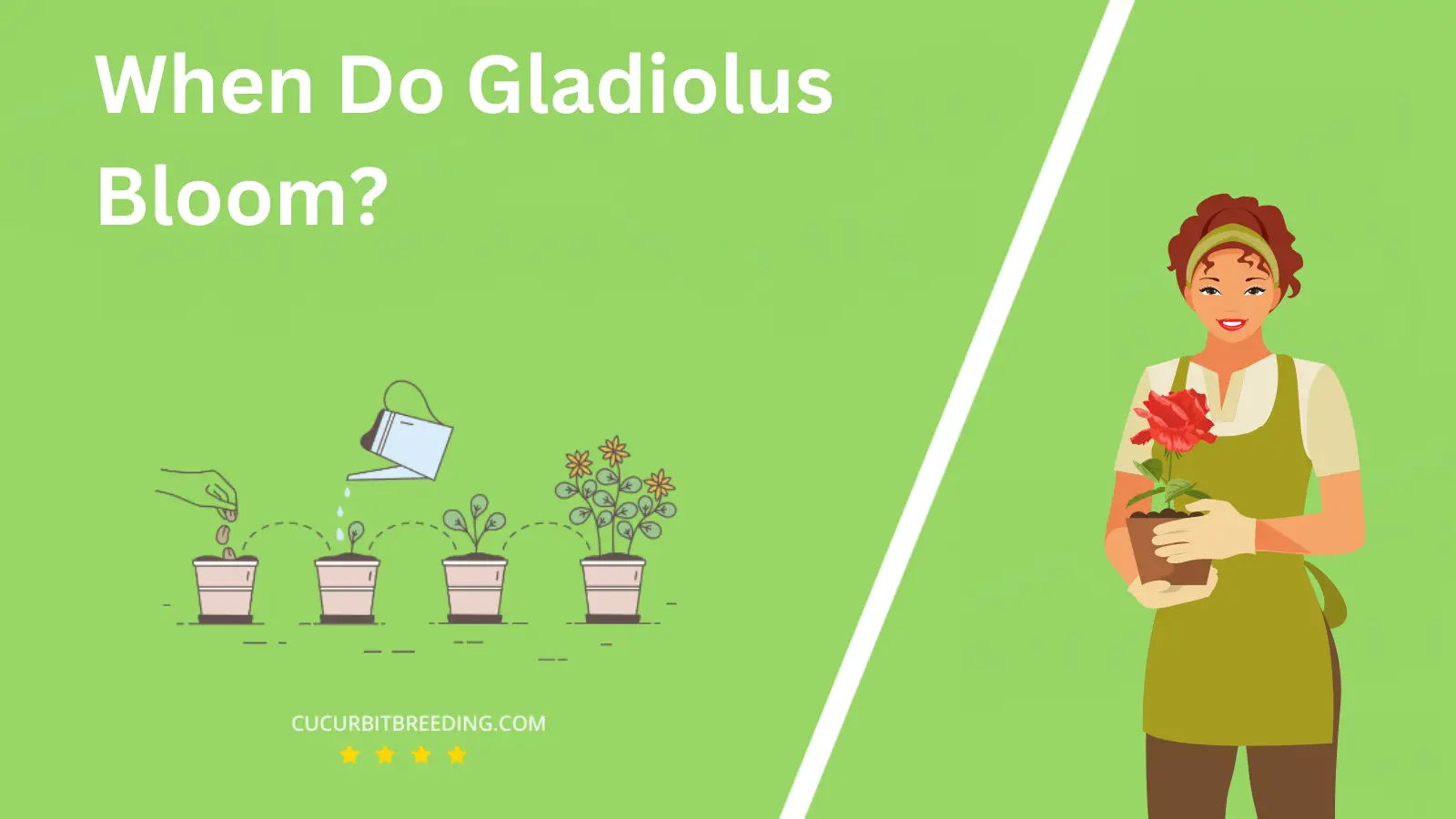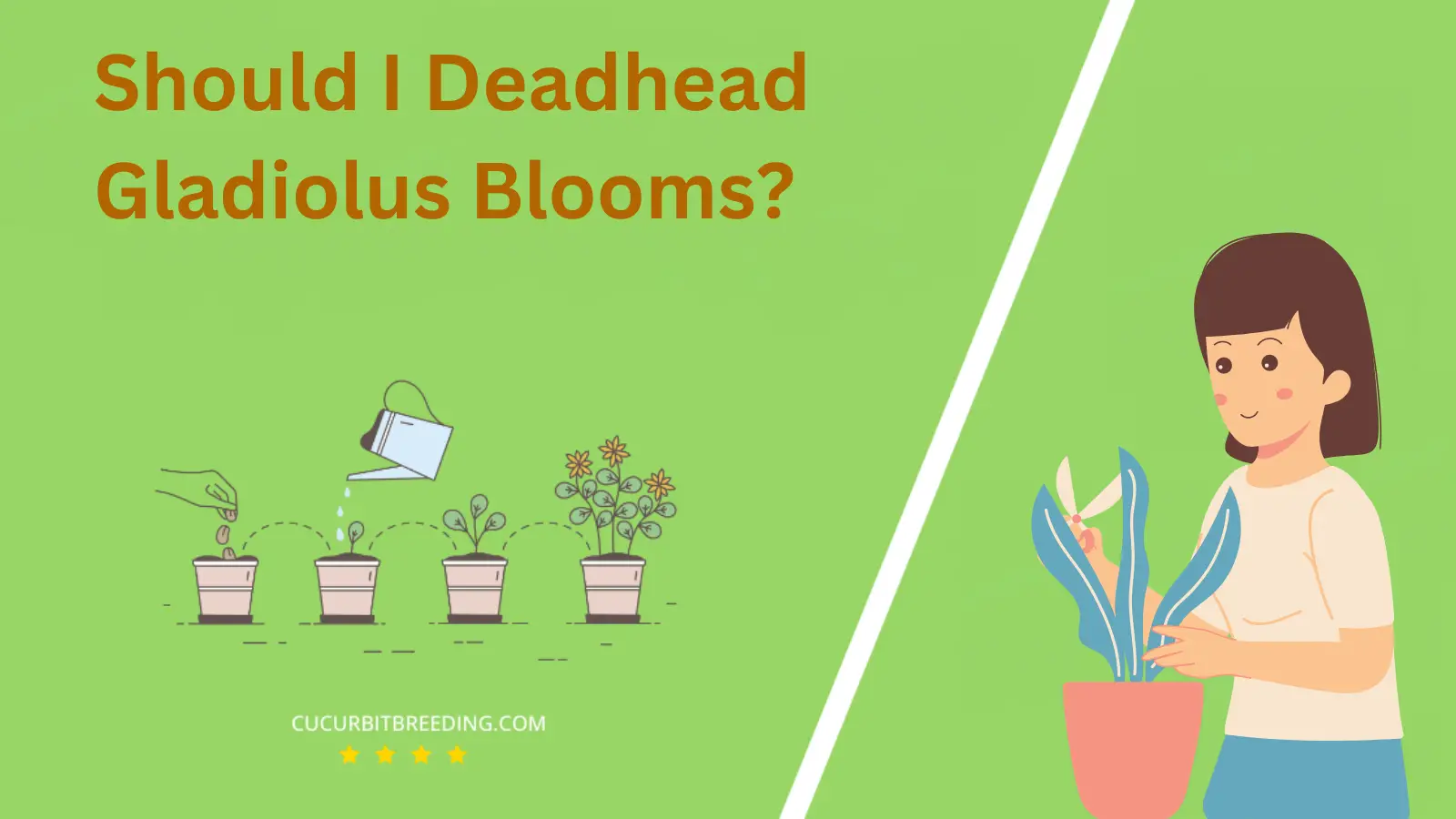
When do gladiolus bloom? This question might be swirling in the mind of every flower enthusiast or gardener. Known for their tall spikes and vibrant blooms, gladiolus are a sight to behold, a symbol of strength and integrity. But their mesmerizing beauty is not always on display.
The timing of their bloom can be a fascinating journey of anticipation and patience. Let’s explore the intriguing life cycle of this beautiful flower, its blooming season, and how to nurture them to blossom.
When Do Gladiolus Bloom?
Gladiolus bloom in the mid-summer through to the first frost of fall. Depending on the specific variety and local climate conditions, the bloom time can vary. Typically, it takes about 70-100 days after planting for gladiolus to bloom.
| Stage | Description |
|---|---|
| Germination | Spring (March-May) |
| Growth | Summer (June, July, August) |
| Blooming | Summer (June-August) |
| Dormancy | Winter (December-February) |
How Long Do Gladiolus Bloom?
Gladiolus typically bloom for about 7 to 10 days once the flowers open. However, the entire blooming period, from the opening of the first bloom until the final bloom fades, can be around 2 to 3 weeks under ideal conditions.
How Light Affects Gladiolus Blooms?
Light has a significant impact on Gladiolus blooms. Gladioli require full sunlight, or a minimum of 6 hours of direct sunlight each day, for maximum blooming. This is vital as light is integral to the process of photosynthesis, enabling the plants to generate the energy needed for growth and bloom production. Without sufficient light, Gladiolus plants may become weak and leggy, and their blooms may be sparse and small. Therefore, when cultivating Gladiolus, selecting a planting location with ample sunlight is essential.
Will Gladiolus Bloom the First Year You Plant Them?
Yes, Gladiolus will bloom in the first year you plant them. These plants are known to grow rapidly and usually produce blooms within 70 to 100 days after planting. However, the timing of the bloom can be influenced by factors such as the local climate, weather conditions, and the specific care provided to the plant.
Will Gladiolus Bloom Every Year?
Yes, Gladiolus will bloom every year. They are perennial plants, meaning they live for more than two years, blooming once annually. The bulbs, also known as corms, multiply each year, providing a fresh batch of flowers. However, they require proper care and favorable conditions to ensure their annual blooming. This includes planting them in full sun and well-drained soil, and digging up and storing the corms indoors over winter in colder climates.

Should I Deadhead Gladiolus Blooms?
Yes, you should deadhead Gladiolus blooms. Deadheading, or removing spent flowers, encourages the plant to focus its energy on producing more blooms. Moreover, it helps to maintain the plant’s overall health by preventing the development of seed pods, which can drain energy from the plant. However, leave the foliage in place after deadheading until it turns yellow or brown, as the leaves provide necessary nutrients for the plant.
Top Reasons Mature Gladiolus May Stop Flowering

The top reasons why mature Gladiolus may stop flowering are primarily related to inadequate care and unfavorable growing conditions. First, these plants may fail to bloom if they’re not getting enough sunlight. Gladiolus require full sun to flower. Second, inappropriate watering habits can also impact flowering. Gladiolus prefer well-drained soil and may not bloom if the soil is overly soggy or too dry.
Thirdly, poor soil conditions can hinder flowering. Gladiolus need rich, well-drained soil enriched with organic matter to bloom. Fourth, they may not flower if they’re overcrowded. These plants need space to grow and should be thinned out if too close together. Lastly, Gladiolus may stop flowering if they’re infected by disease or infested by pests. Regular monitoring and appropriate treatments can help prevent these problems and promote healthy flowering.